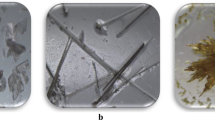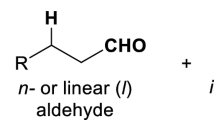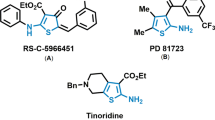Abstract
Disolketal iminodiacetic acid (DSIDA) has been synthesized from the enzyme-catalyzed condensation reaction between derivatives of iminodiacetic acid (IDA) and glycerol. According to all available literature, DSIDA is a novel diester that has never been synthesized. It is a precursor to water-soluble polyhydric alcohols and helps to address the global need of the biodiesel industry to find new uses for glycerol. Reacting diMe-IDA with solketal, a protected glycerol, produced DSIDA in yields as high as 96.4% under optimal reaction conditions of 70 °C and 200 Torr for 24 h. The reaction was monitored using ATR-IR and a validated GC method. ATR-IR monitored the disappearance of the primary solketal alcohol and the appearance of cyclic solketal ether bonds in the molecular backbone of the intermediates and product. Structural analysis of the intermediates and products was performed using two-dimensional NMR, GC, GC–MS and elemental analysis. All spectral data was in agreement with the proposed structures for the chemical reaction. Thermal profiles were determined by TGA to be single-stage decompositions above 160 °C.







Similar content being viewed by others
References
Bauer F, Hulteberg C (2013) Is there a future in glycerol as a feedstock in the production of biofuels and biochemicals? Biofuels Bioprod Biorefin 7(1):43–51
Pagliaro M, Rossi M (2008) The future of glycerol: new usages for a versatile raw material. Royal Society of Chemistry Publishing, Camridge
National Renewable Energy Laboratory (November 2015) http://www.nrel.gov/docs/fy16osti/64720.pdf. Accessed Sept 2016
Wyatt VT, Nunez A, Foglia TA, Marmer WN (2006) Synthesis of hyperbranched poly(glycerol-diacid) oligomers. J Am Oil Chem Soc 83:1033–1039
Han Q, Chen X, Niu Y, Zhao B, Wang B, Mao C, Chen L, Shen J (2013) Preparation of water-soluble polyester nanoparticles with sulfonic acid functional groups and their micelles behavior, anticoagulant effect and cytotoxicity. Langmuir 29:8402–8409
Barroso-Bujans F, Martinez R, Yazdani-Pedram M, Ortiz P, Frey H (2007) Water-soluble polyesters from long chain alkyl ester of citric acid and poly(ethylene glycol). Eur Polym J 43:1288–1301
Ries S (1991) Triacontanol and its second messenger 9-β-L(+)-adenosine as plant growth substances. Plant Phys 95(4):986–989
Wyatt VT, Yadav MP, Latona N, Liu CK (2013) Thermal and mechanical properties of glycerol-based polymer films infused with plant cell wall polysaccharides. J Biobased Mater Bioenergy 7:348–356
Wyatt VT (2012) The Lewis-acid-catalyzed synthesis of hyperbranched polymers based on glycerol and diacids in toluene. J Am Oil Chem Soc 89(2):313
Villeneuve P, Foglia TA, Mangos TJ, Nunez A (1998) Synthesis of polyfunctional glycerol ester: lipase-catalyzed esterification of glycerol with diesters. J Am Oil Chem Soc 75:1545
Sunder A, Hanselmann R, Frey H, Mulhaupt R (1999) Controlled synthesis of hyperbranched polyglycerols by ring-opening multibranching polymerization. Macromolecules 32:4240
Bakhiya N, Abraham K, Gurtler R, Appel KE, Lampen A (2011) Toxicological assessment of 3-chloropropane-1,2-diol and glycidol fatty acid esters in food. Mol Nutr Food Res 55(4):509
Akoh CC (1993) Lipase-catalyzed synthesis of partial glyceride. Biotechnol Lett 15:949
Hess R, Bornscheuer UT, Capewell A, Scheper T (1995) Lipase-catalyzed synthesis of monostearlylglycerol in organic solvents from 1,2-O-isopropylidene glycerol. Enzym Microb Technol 17:725
Bornscheuer UT, Yamane T (1995) Fatty acid vinyl esters as acylating agents: a new method for the enzymatic synthesis of monoacylglycerols. J Am Oil Chem Soc 72:193
Hensch EJ, Wilbur AG (1958) Epoxidized ester of glycols and pentaerythritol. application as plasticizers for poly(vinyl chloride). Ind Eng Chem 50(6):871–872
Cottington Robert L, Ravner Harold, Sniegoski Paul J (1971) Lubricants from mixed pentaerythritol esters of 2-ethylhexanoic and isostearic acids. ASLE Trans 14(3):163–169
Karis TE, Miller JL, Hunziker HE, de Vries MS, Hopper DA, Nagaraj HS (1999) Oxidation chemistry of a pentaerythritol tetraester oil. Tribol Trans 42(3):431–442
Fandiño O, Pensado AS, Lugo L, López ER, Fernández J (2005) Volumetric behaviour of the environmentally compatible lubricants pentaerythritol tetraheptanoate and pentaerythritol tetranonanoate at high pressures. Green Chem 7(11):775–783
Marrian SF (1948) The chemical reactions of pentaerythritol and its derivatives. Chem Rev 43(1):149–202
Petrov P, Bozukov M, Burkhardt M, Muthukrishnan S, Müller AHE, Tsvetanov CB (2006) Stabilization of polymeric micelles with a mixed poly(ethylene oxide)/poly(2-hydroxyethyl methacrylate) shell by formation of poly(pentaerythritol tetraacrylate) nanonetworks within the micelles. J Mater Chem 16:2192–2199
Wang M, Xu J, Wu H, Guo S (2006) Effect of pentaerythritol and organic tin with calcium/zinc stearates on the stabilization of poly(vinyl chloride). Polym Degrad Stab 91(9):2101–2109
Gao JG, Liu XQ, Yang JB, Zhu FL (2012) Influence of polyols as a co-stabilizer on stabilization efficiency of calcium/zinc stabilizers to PVC. Adv Mater Res 549:251–254
Xu S, Li D, Yu X, Zhang Y, Yu Y, Zhou M, Tang S (2012) Study on pentaerythritol–zinc as a novel thermal stabilizer for rigid poly(vinyl chloride). J Appl Polym Sci 126:569–574
Aziz NAM, Yunus R, Rashid U, Zulkifli NWM (2016) Temperature effect on tribological properties of polyol ester-based environmentally adapted lubricant. Tribol Int 93(Part A):43–49
La Nasa J, Degano I, Modugno F, Colombini MP (2015) Industrial alkyd resins: characterization of pentaerythritol and phthalic acid esters using integrated mass spectrometry. Rapid Commun Mass Spectrom 29(3):225–237
Thomas P (1998) Ageing characteristics of synthetic liquids. In: Conference record of IEEE International Symposium on Electrical Insulation. 2:570–573
Pistel KF, Breitenbach A, Zange-Volland R, Kissel T (2001) Brush-like branched biodegradable polyesters, part III. Protein release from microspheres of poly(vinyl alcohol)-graft-poly(D, L-lactic-co-glycolic acid). J Control Release 73(1):7–20
Hüettenrauch R, Fricke S (1984) Effect of glycerol on the helical conformation of gelatin. Pharmazie 39(8):500–501
Wyatt VT, Jones K (2012) Quantification of monomers in poly(glycerol-co-diacid) gels using gas chromatography. J Biobased Mater Bioenergy 6(1):119–124
Beyazyildirim S, Çamurlu P, Yilmaz D, Güllü M, Toppare L (2006) Synthesis and electrochromic properties of conducting copolymers of dioxocino- and dithiocino- quinoxalines with bithiophene. J Electroanal Chem 587:235–246
ASTM D5291-10 (2015) Standard test methods for instrumental determination of carbon, hydrogen, and nitrogen in petroleum products and lubricants. ASTM International, West Conshohocken, PA, www.astm.org
ASTM D5622-95 (2011) Standard test methods for determination of total oxygen in gasoline and methanol fuels by reductive pyrolysis. ASTM International, West Conshohocken, PA, www.astm.org
Aue WP, Karhan J, Ernst RR (1976) Homonuclear broad band decoupling and two-dimensional J-resolved NMR spectroscopy. J Chem Phys 64:4226–4227
Hurd RE (1990) Gradient enhanced spectroscopy. J Magn Reson 87:422–428
Bodenhausen G, Ruben DJ (1980) Natural abundance N-15 NMR by enhanced heteronuclear spectroscopy. Chem Phys Lett 69:185–189
Kupce E, Freeman R (1995) Stretched adiabatic pulses for broadband spin inversion. J Magn Reson Ser A 117:246–256
Boyer RD, Johnson R, Krishnamurthy K (2003) Compensation of refocusing inefficiency with synchronized inversion sweep (CRISIS) in multiplicity-edited HSQC. J Magn Reson 165:253–259
Bax A, Summers MF (1986) Proton and carbon-13 assignments from sensitivity-enhanced detection of heteronuclear multiple-bond connectivity by 2D multiple quantum NMR. J Am Chem Soc 108:2093–2094
Hadden CE (2005) Adiabatic pulses in 1H–15N direct and long-range heteronuclear correlations. Magn Reson Chem 43:330–333
University of California, San Francisco, Sparky––NMR Assignment and Integration Software http://www.cgl.ucsf.edu/home/sparky/. Accessed Sept 2016
Kováts E (1958) Gas chromatographic characterization of organic compounds. Part 1: retention indices aliphatic halides, alcohols, aldehydes and ketones. Helv Chim Acta 41(7):1915–1932
Miller C, Austin H, Posorske L, Gonzalez J (1988) Characteristics of an immobilized lipase for the commercial synthesis of esters. J Am Oil Chem Soc 65:927–931
Nanda MR, Yuan Z, Qin W, Ghaziaskar HS, Poirier MA, Xu C (2014) A new continuous-flow process for catalytic conversion of glycerol to oxygenated fuel additive: catalyst screening. Appl Energy 123:75–81
Kilimov AP, Svechnikova MS, Shevchenko VI, Smirnov VV, Zotov SB, Kvasnyuk-Mudryi FV (1969) Infrared spectra of cyclic ethers and their derivatives. Chem Heterocycl Compd 5(2):156–159
Acknowledgements
Mr. Edward Wickham and Dr. Pheobie Qi are acknowledged for their assistance with the collection of IR data.
Author information
Authors and Affiliations
Corresponding author
Additional information
Mention of trade names or commercial products in this publication is solely for the purpose of providing specific information and does not imply recommendation or endorsement by the U.S. Department of Agriculture. ARS is an equal opportunity provider and employer.
Electronic supplementary material
Below is the link to the electronic supplementary material.
About this article
Cite this article
Wyatt, V.T., Strahan, G.D. & Jones, K. The Enzymatic Synthesis and Characterization of Disolketal Iminodiacetic Acid (DSIDA). J Am Oil Chem Soc 93, 1683–1695 (2016). https://doi.org/10.1007/s11746-016-2911-9
Received:
Accepted:
Published:
Issue Date:
DOI: https://doi.org/10.1007/s11746-016-2911-9




